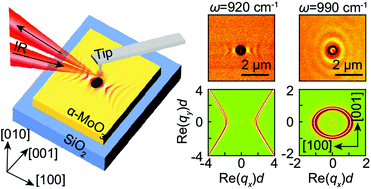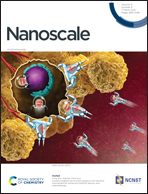Polariton waveguide modes in two-dimensional van der Waals crystals: an analytical model and correlative nano-imaging†
Abstract
Two-dimensional van der Waals (vdW) crystals can sustain various types of polaritons with strong electromagnetic confinements, making them highly attractive for nanoscale photonic and optoelectronic applications. While extensive experimental and numerical studies have been devoted to the polaritons of the vdW crystals, analytical models are sparse. Particularly, applying the model to describe polariton behaviors that are visualized by state of the art near-field optical microscopy requires further investigations. In this study, we develop an analytical waveguide model to describe polariton propagations in vdW crystals. The dispersion contours, dispersion relations, and localized electromagnetic field distributions of polariton waveguide modes are derived. The model is verified by real-space optical nano-imaging and numerical simulation of phonon polaritons in α-MoO3, which is a vdW biaxial crystal. Although we focus on α-MoO3, the proposed model is valid for other polaritonic crystals within the vdW family given the corresponding dielectric substitutions. Our model therefore provides an analytical rationale for describing and understanding the localized electromagnetic fields in vdW crystals that are associated with polaritons.

- This article is part of the themed collection: Advances in Plasmonics and Its Applications


 Please wait while we load your content...
Please wait while we load your content...